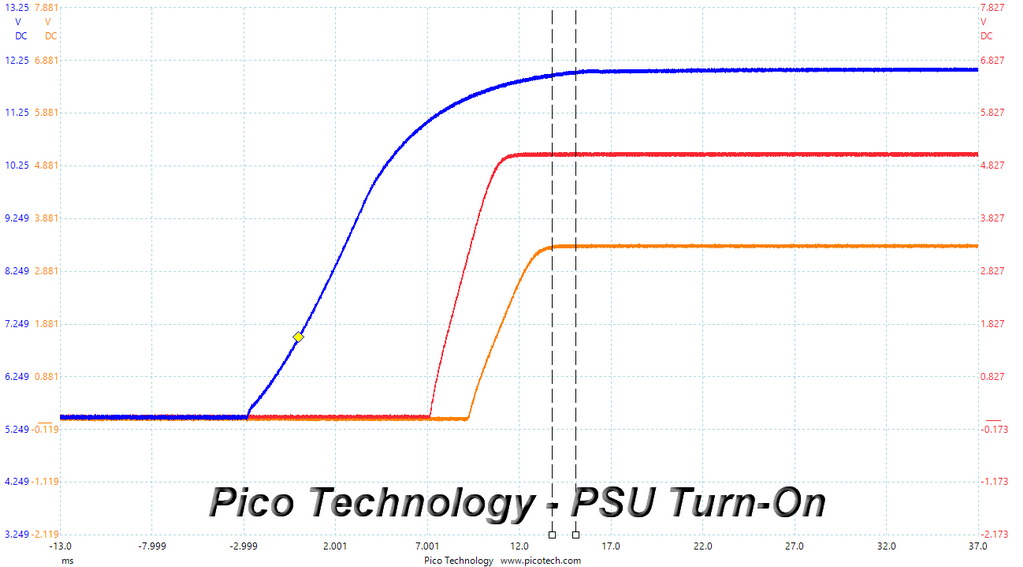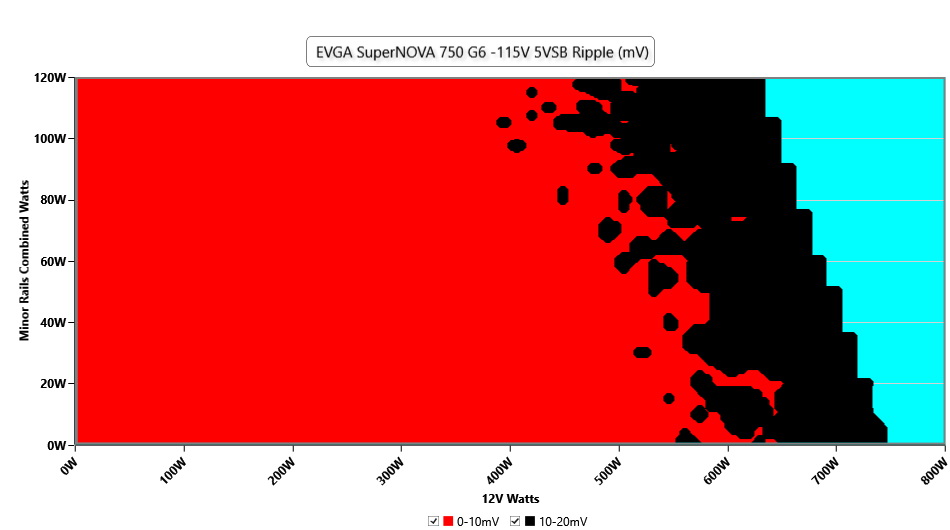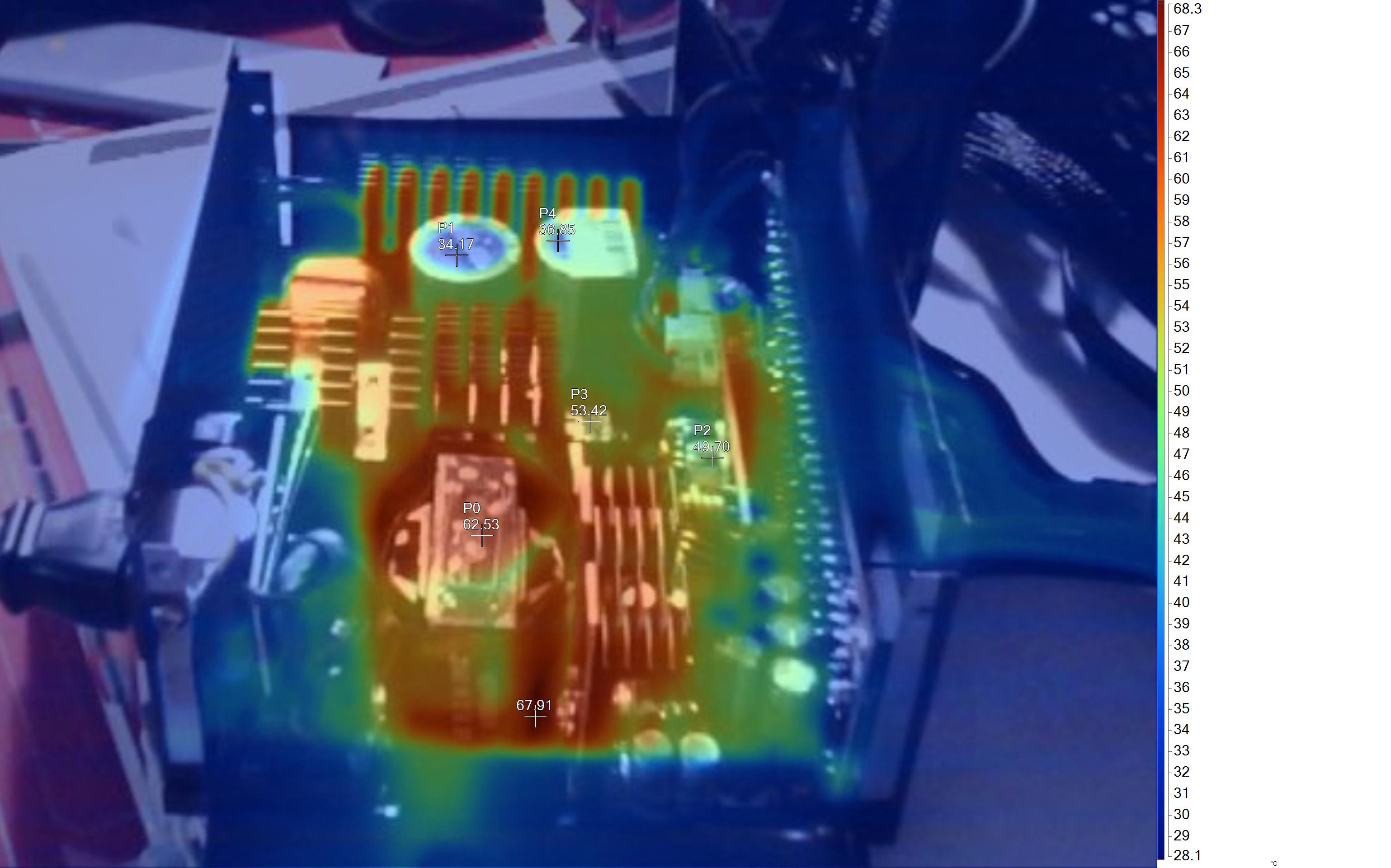Why you can trust Tom's Hardware
Protection Features
Check out our PSUs 101 article to learn more about PSU protection features.
|
OCP (Cold @ 25°C) |
12V: 88.4A (141.44%), 12.152V |
|
OCP (Hot @ 44°C) |
12V: 88.2A (141.12%), 12.169V |
|
OPP (Cold @ 24°C) |
1074.16W (143.22%) |
|
OPP (Hot @ 45°C) |
1073.16W (143.09%) |
|
OTP |
✓ (153°C @ 12V Heat Sink) |
|
SCP |
12V to Earth: ✓ |
|
PWR_OK |
Proper operation |
|
NLO |
✓ |
|
SIP |
Surge: MOV |
The OCP and OPP triggering points are almost the same, under hot and cold conditions, most likely because of the MCU, which is more accurate than analog ICs. Given the platform's high quality and tolerant components, there won't be any problems with the high OCP at 12V and the over 140% OPP triggering point. All other necessary protection features are present and work well.
DC Power Sequencing
According to Intel’s most recent Power Supply Design Guide (revision 1.4), the +12V and 5V outputs must be equal to or greater than the 3.3V rail at all times. Unfortunately, Intel doesn't mention why it is so important to always keep the 3.3V rail's voltage lower than the levels of the other two outputs.



No problems here since the 3.3V rail is always lower than the other two.
Cross Load Tests
To generate the following charts, we set our loaders to auto mode through custom-made software before trying more than 25,000 possible load combinations with the +12V, 5V, and 3.3V rails. The deviations in each of the charts below are calculated by taking the nominal values of the rails (12V, 5V, and 3.3V) as point zero. The ambient temperature during testing was between 30 to 32 degrees Celsius (86 to 89.6 degrees Fahrenheit).
Load Regulation Charts




Efficiency Graph
Ripple Graphs
The lower the power supply's ripple, the more stable the system will be and less stress will also be applied to its components.




Infrared Images
We apply a half-load for 10 minutes with the PSU's top cover and cooling fan removed before taking photos with a modified FLIR E4 camera able to deliver an IR resolution of 320x240 (76,800 pixels).
Get Tom's Hardware's best news and in-depth reviews, straight to your inbox.




The hottest parts are the main transformer and the APFC, primary and 12V heat sinks. Still, the operating temperatures are low, given the operating conditions. The electrolytic caps are not close to notable heat sources unless you apply a high load on the DC-DC converters. Nevertheless, modern systems don't draw much power from the minor rails unless you have lots of ARGB components installed.
MORE: Best Power Supplies
MORE: How We Test Power Supplies
MORE: All Power Supply Content
Current page: Protection Features, DC Power Sequencing, Cross-Load Tests and Infrared Images
Prev Page Load Regulation, Hold-Up Time, Inrush & Leakage Current, Efficiency and Noise Next Page Transient Response Tests, Timing Tests, Ripple Measurements and EMC Pre-Compliance Testing
Aris Mpitziopoulos is a contributing editor at Tom's Hardware, covering PSUs.
